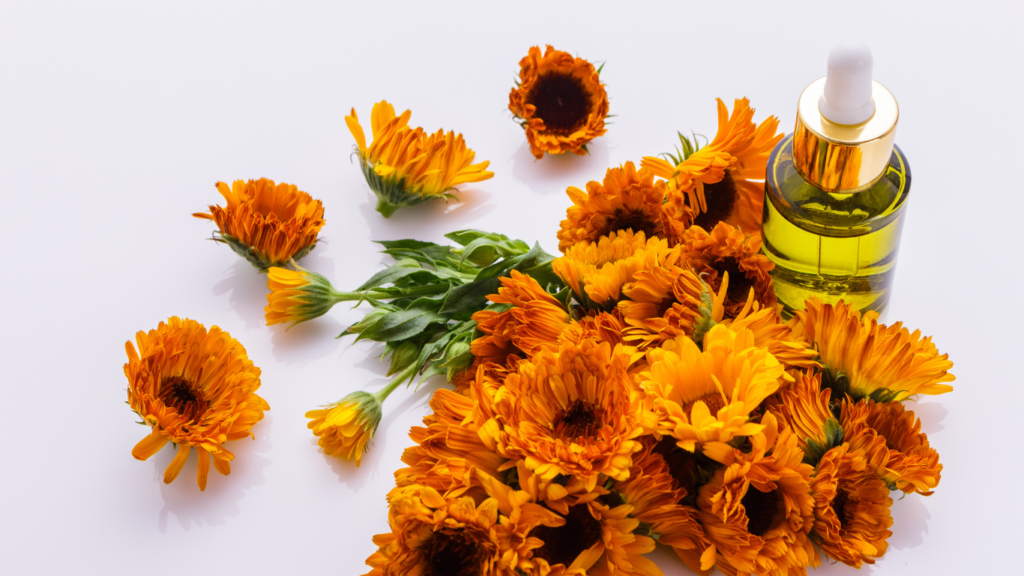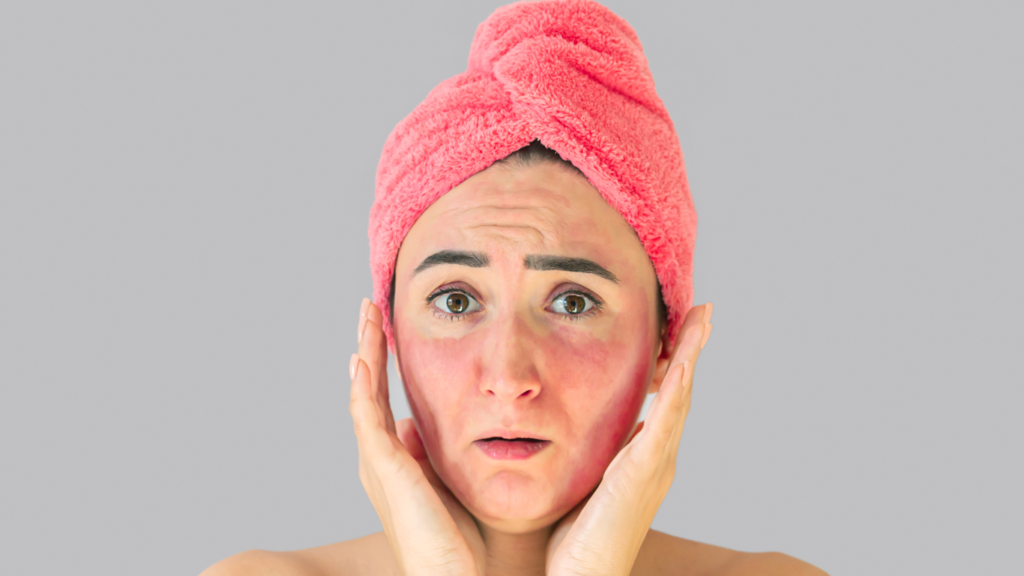Arnica montana, often simply known as Arnica, is a perennial herb. This means that it does not need to be replanted every year. The herb is native to Europe and North America, and you’ll also sometimes see it referred to as wolf’s bane. This yellow-orange flower has been used for centuries in traditional medicine, particularly for its powerful anti-inflammatory and analgesic (pain-relieving) properties. In recent years, Arnica has gained popularity in the skin care world, where it is renowned for its ability to soothe irritated skin and aid in skin healing. But what does the science say about Arnica’s skin benefits? Let’s dive into the evidence and find out if arnica’s skin benefits are hype or are they actually useful.
The Active Compounds in Arnica
The biggest marketing claim for arnica skin benefits is its ability to relieve pain. These pain-relieving properties are associated with the rich composition of bioactive compounds. In some fundamental in vitro experiments, some common compounds showed benefits that were attractive for skin care applications. These include:
Sesquiterpene Lactones: The compound with the highest concentration in Arnica, sesquiterpene lactones, has an anti-inflammatory effect. These compounds prevent the activation of certain immune system cells, which is important because the activation of these immune cells is responsible for painful swelling that can occur in the skin after treatments or injury.
Flavonoids: These herbal antioxidants protect the skin from oxidative stress by neutralizing free radicals. This helps reduce skin aging and promotes overall skin health.
Related post: The ultimate guide to natural antioxidants for skin
Polysaccharides: Like most natural ingredients, Arnica has natural sugars. These sugars are humectants that hold onto water, similar to hyaluronic acid and other botanicals used in skin care. This is important in skin care because it can help maintain the skin’s moisture balance.
Related post: 10 Effective Natural Alternatives to Hyaluronic Acid
So, though by themselves in vitro tests (cells in a Petri dish), these compounds have shown promise, let’s talk about their skin benefits when extracted from Arnica and used in skin care products.

So what does science say about Arnica’s skin benefits?
Several studies have used arnica gel after an in-office procedure. Some studies have looked at the benefits of Arnica when taken orally. However, when researching the benefits of arnica for the skin, I only read studies that used it topically (applied directly to your face in a gel or cream).
Most studies tested the gel at concentrations of 10 or 20%. The results of studies looking at 10% gel did not show appreciable reduction in pain after in-office procedures. However, there were promising results for gels with a concentration of 20% arnica extract.

One study showed that it could reduce swelling and bruising around the eyes after nose surgery. Other studies showed it worked better than some creams in reducing bruising from lasers or after facials. One study evaluated its results after a facelift. However, there was no noticeable difference in pain, bruising or swelling with or without arnica gel.
It is important to note that the skin benefits of arnica were most effective as an adjunct to other pain relief treatments. Currently, it cannot be said definitively whether arnica is an effective stand-alone pain-relieving ingredient. more research is needed. However, there is some preliminary evidence that arnica shows promise as a natural pain reliever supplement after surgery or injury.
Related post: Demystifying your skin barrier: What it is and how it breaks down
How to incorporate Arnica into your skin care routine
Although the science doesn’t say for sure, Arnica can replace more traditional pain relievers. For the right skin care concerns, there could be a potential use. Before incorporating arnica into your skin care routine, consult with a dermatologist or skin care professional to make sure it will meet your skin concerns and needs. However, as a general guideline, when the pain is less severe, such as mild sunburn or a sensitized barrier, this may be an opportunity to incorporate Arnica into your skin care routine. Here are some practical ways to use Arnica in your skin care routine:

Arnica creams and gels: These are the most common forms of Arnica used for skin care. They can be applied directly to the affected area to relieve mild pain. When choosing an Arnica cream or gel, look for products with a 20% arnica concentration and containing a standardized extract to ensure consistency in potency. Additionally, products with their own clinical testing are usually more reliable (assuming the testing was done with a reputable lab) than those without.
Arnica oil: Arnica oil can be used for massage, especially after intense physical activities. It can help relax sore muscles and reduce inflammation. However, Arnica oil should always be diluted with a carrier oil, such as jojoba or almond oil, before application to avoid skin irritation. Again, this can help with mild pain relief and you want an oil that has 20% arnica extract.
Arnica in combination products: Many skin care products combine Arnica with other soothing ingredients such as aloe vera or chamomile. These products can be especially beneficial for people with sensitive or irritated skin, providing a synergistic effect that enhances the overall soothing properties. Look for products that have been clinically tested when you can, because the formulation can make or break the effectiveness of the ingredient.
Possible considerations for Arnica in your skin care routine
Despite its many benefits, it is necessary to use Arnica with caution. Here are some considerations to keep in mind:

Skin irritation: Arnica is a powerful herb and you don’t want to fall victim to the trap of higher concentration = more effective. In high concentrations, it can cause skin irritation, especially in people with sensitive skin. It is always recommended to do a patch test before applying Arnica to a larger area of skin.
Avoid open wounds: Arnica should not be applied to broken skin or open wounds, as it can cause irritation and possibly delay healing.
Allergic reactions: Some people may be allergic to Arnica, particularly those who are allergic to Asteraceae plants such as daisies and marigolds. If you experience any signs of an allergic reaction, such as itching, redness or swelling, discontinue use immediately.
Oral use: While Arnica is commonly used in homeopathy, it should never be ingested in its pure form as it is toxic and can cause serious side effects such as nausea, dizziness and organ damage.
Conclusion: Is arnica right for your skin?
The main benefit of arnica for the skin is its analgesic properties. Like most botanicals, it also has antioxidant and moisturizing properties. However, its pain-relieving benefits set it apart from other botanical skin care ingredients. There is some early evidence that arnica has pain-relieving benefits when used in skin care, especially for those prone to minor skin injuries or post-surgical recovery.
However, it is essential to use Arnica properly and be aware of its possible side effects. Always choose high-quality, diluted products and consult a healthcare provider if you are unsure about their use.
In conclusion, Arnica is not a one-size-fits-all solution, but it can be a powerful ally in your skincare arsenal when used correctly. Whether you’re recovering from a minor injury, dealing with post-surgery bruising, or just looking for a natural way to soothe inflamed skin, the science behind Arnica’s skin benefits shows it has a place in your routine. By understanding its benefits and limitations, you can harness the healing power of nature to keep your skin looking and feeling its best.
